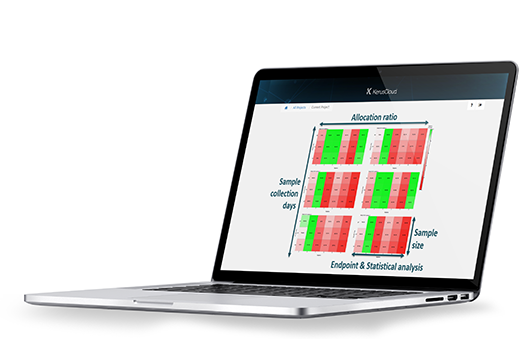Liberating Patient Data
Aiden Flynn discusses mining real-world data pools to transform drug development.
Aiden Flynn

The healthcare landscape is evolving swiftly and we are entering an era of greater patient choice, personalized medicine and a focus on value and outcomes. This evolution necessitates a fundamental change in our approach to drug development and ensuring that we utilize all resources at our disposal to obtain a clearer picture of patient populations, treatment effectiveness and the natural history of particular diseases.
One of those resources that we can harness great insight from is the real-world data that is taken from patients outside of the clinical research settingvia technology, public sector organizations and commercial entities. Aiden Flynn, CEO of clinical trial data and design experts, Exploristics, explores the current data environment and its data pools and how these can be fully utilized for the benefit of advancing research.
What kind of data exists?
Real-world evidence is defined by the US Food and Drug Administration (FDA) as: “Healthcare information derived from multiple sources outside of typical clinical research settings…”. These datasets are a resource that can accompany the information gleaned from a traditional clinical trial research setting to provide a more comprehensive picture and generalize findings to larger populations of patients.
Real-world data evidence generally comes from a range of sources including:
- Real-world clinical data
This is based on electronic health records (EHR) that record patient treatments in everyday settings. It features information such diagnoses, prescriptions, procedures, hospital stays, doctors’ notes and lab results. Over the past decade much of this information has become digitized in hospitals and health services and better integrated across systems, creating richer data pools.
- Medical insurance and administrative data
The data that is gathered for non-clinical purposes – mainly by insurance companies - includes diagnoses, medical services provided and cost information. Administrative data can also include patient population surveys which are used to track a treatment or condition.
- Patient reported data
Reported data is most often collected and reported by patients themselves and covers their experience of a treatment, symptoms and/ or health profile over a given time period. It is an area that is growing due to the use of wearable devices and apps that can automate this process.
- Alternative digital health data
Digital dominance is giving way to new sources of data that falls outside of the healthcare sphere altogether. This encompasses a range of data sources often originating from healthy patients who engage in collection of data from wearables and other sources, such as genetic data harvested by companies such as 23 and me. This has the potential to reveal deeper insights into the base line health status of normal healthy subjects not presenting as patients or taking part in clinical trials.
Expansive data pools
The data environment continues to mature rapidly, and many countries now have high-value, real-world data pools through healthcare systems, charities and disease registries. Several countries in Scandinavia such as Sweden and Norway have led the way in this regard having a very well collated and organized patient data set. These large datasets contain information about several hundred million patients which is ready to be harnessed and utilized to drive medical research forward.
The growing number of data sources via various organizations offer a vital opportunity to glean useful clinical information for healthcare decision-makers, including developers, regulators, ethics boards, healthcare providers, health insurance companies, as well as public policymakers. With such large numbers of stakeholders involved in treatment and purchasing decisions, there is a considerable need to exploit these wide-ranging public healthcare data sources effectively.
Learning systems
To realize the full potential of real-world data gleaned from these public and private sector bodies requires a ‘learning healthcare system’. Based on EHRs and other routinely collected healthcare data, a learning healthcare system allows data to be continuously fed into the system, learning about treatment pathways and outcomes, ensuring that with every new patient treated, we know more overall about the practice of medicine. As these systems evolve the potential exists to plug the output into platforms that help develop novel medical interventions and streamline the patient care pathways.
Compiling and using real-world data in this way would complement the traditional evidence from randomized controlled trials, for the benefit of all stakeholders involved in the development and use of medicines. It would also facilitate the integration of all medical research and break down barriers between the structured research setting and everyday medical practice. To make this a reality, healthcare bodies must be:
- Technologically ready to collect data – understanding the appropriate formats, processes and data capture tools in which to collect the data so that it can be interrogated in an efficient and consistent manner.
- Prepared with the right analytical methods –able to implement the appropriate analysis methods, thus allowing timely and meaningful insights to be gained as data is produced.
- Regulated by robust standards - on protection of personal data, consent, ethics and data access.
Fully digitizing and standardizing data in the healthcare field will require a joint effort on an international scale and ensure that learning healthcare systems can be fully implemented and utilized.
The benefits
Suitably captured and analyzed, real-world data offers more than just an increased insight into the effectiveness, cost and safety of new clinical interventions. Appropriately harnessed, it can be used to explore new clinical questions, identify new uses for medicines, fill in knowledge gaps on the use of medicines in real-world settings, identify and monitor unforeseen risks and adverse events associated with an approved medication and evaluate unstudied factors influencing a patient’s outcome to improve patient care.
Across many countries, there are many pools of rich real-world data that have been collected over the years, whichoffer a new and evolving prospect for bringing real-world insight into drug development. The liberation of these real-world data via state-of-the-art, digitized learning systems could transform the development of new medicines and the delivery of healthcare. The data revolution is only just beginning but it promises to be a vibrant transformation.

About the author
Aiden Flynn is the founder of Exploristics and has more than 20 years’ experience in drug discovery and clinical development.
Is Artificial Intelligence a ‘Product’? Products Liability Implications for AI-Based Products
April 10th 2025As the physical products we use evolve to become increasingly complex, traditional products liability frameworks may not always fit to provide remedies for harm that can result from using novel product types.